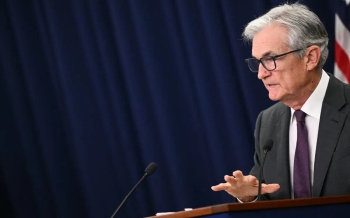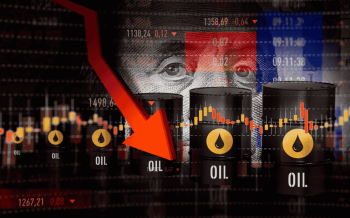Oil Prices Rise on U.S. Inventory Drop and Geopolitical Uncertainty
Global oil prices witnessed renewed volatility this week, reflecting the complex interplay between supply dynamics, geopolitical uncertainty, and global economic concerns. Prices rebounded on Wednesday after industry data revealed a larger-than-expected decline in U.S. crude inventories, providing some support to a market that had recently come under pressure from worries about slowing demand and rising supply.
In the latest trading session, Brent crude futures gained nearly 1%, trading around $66.45 per barrel, while West Texas Intermediate (WTI) crude rose by approximately 1.1% to $62.46 per barrel. This rebound followed earlier declines that were driven by speculation about potential peace talks between Russia and Ukraine, raising concerns that a resolution could bring additional supply back into global markets at a time when OPEC+ is already increasing output.
The biggest factor supporting oil prices was the American Petroleum Institute’s report, which showed U.S. crude inventories fell by 2.4 million barrels in a single week—almost double analysts’ expectations. This stronger-than-anticipated drawdown suggested that demand in the world’s largest oil consumer remains resilient, offering some balance to the bearish sentiment surrounding global growth fears.
Market participants are now closely awaiting the official figures from the U.S. Energy Information Administration (EIA), which often have a more immediate and significant impact on prices. Inventory levels are considered a key barometer of supply and demand trends, and traders view them as critical signals for near-term market direction.
Beyond inventory dynamics, geopolitics continues to play a decisive role. The possibility of a diplomatic breakthrough between Russia and Ukraine remains a focal point for traders, who are trying to assess how any peace framework might impact global oil flows. A potential easing of Western sanctions on Russian exports could inject more barrels into the market, applying downward pressure on prices.
However, analysts caution that a comprehensive settlement is still far from guaranteed, and the path to lasting peace remains uncertain. This lack of clarity keeps investors oscillating between optimism and caution, resulting in sharp intraday moves across energy markets.
At the same time, global demand for energy remains tied to broader economic indicators. Concerns about recession, coupled with persistent inflation in major economies, continue to weigh on sentiment. Industrial activity, transportation data, and consumer spending patterns are all carefully monitored by market participants to gauge whether the global economy can sustain current levels of energy consumption.
Monetary policy adds another layer of complexity. Central banks—particularly the U.S. Federal Reserve—are raising interest rates to combat inflation, which strengthens the U.S. dollar. A stronger dollar typically makes oil more expensive for holders of other currencies, often dampening demand. This interplay between currency markets and commodity markets is a recurring theme that energy traders cannot ignore.
According to insights from Point Trader Group, the current market environment calls for careful risk management. With prices swinging sharply in response to economic data and geopolitical headlines, the firm emphasizes that crude oil may remain range-bound in the near term, with upward moves capped by supply growth and downward moves cushioned by resilient demand. Point Trader Group also highlights the importance of monitoring OPEC+ decisions, as output adjustments by the alliance remain one of the most significant factors shaping supply dynamics.
Looking ahead, the key question for investors is whether global demand can absorb the expected increase in supply. While U.S. stock draws point to robust consumption, a prolonged slowdown in Europe or Asia could quickly reverse this trend. Moreover, if OPEC+ producers continue to add barrels to the market without a corresponding surge in demand, the risk of oversupply will re-emerge, potentially driving prices lower.
In summary, oil prices currently stand at a crossroads. On one side, inventory declines and steady U.S. demand are lending support. On the other, geopolitical developments and the uncertain global economic outlook continue to weigh heavily. For traders and investors, this means staying alert to real-time data, being prepared for volatility, and maintaining strategies that can withstand sudden swings. In a market as dynamic as energy, stability remains elusive, and adaptability is the key to success.


 English
English
















